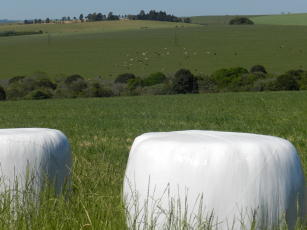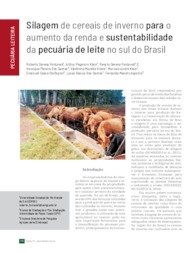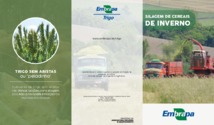Conservação de forragens de espécies de inverno
Conservation of fodder from winter species

Photo: MAGNANTE, Luiz Henrique
The Southern region of Brazil is characterized by milk-producing properties that need to efficiently use the area available. Integrated agricultural production systems, including integrated crop-livestock systems (ICLS), integrate activities aimed at optimizing land use, infrastructure, and labor, minimizing costs and diluting risks. Producing wet grain silage from winter cereals after grazing in autumn and winter and followed by deferral for grain harvesting is a strategy to generate more income in the winter. The ensiling aims to conserve the nutrients of the ensiled material through anaerobic fermentation, with minimum losses of dry matter and energy. Grain silage can be a supplementary option concentrated in the food management of farm animals, leading to a significant reduction in feed costs. We are talking here about several species, forage grasses and winter cereals that can be used for forage conservation in anaerobic conditions, silage and pre-dried fodder. The species include barley, white oats, triticale, wheat , rye, black oats, and annual ryegrass.
Where to find:
Embrapa Trigo
BR 285 KM 294 Passo Fundo RS,
CEP 99001 970, Caixa Postal 451
Fone: +55 (54) 3316-5800
https://www.embrapa.br/trigo/busca-de-publicacoes/-/publicacao/1007384/rendimento-valor-nutritivo-e-caracteristicas-fermentativas-de-silagens-de-cereais-de-inverno
Agricultural practice: For grazing management Launch year: 2018
Country: Brazil Region: South State: Paraná, Rio Grande do Sul, Santa Catarina Biome: Atlantic Rainforest, Pampa
Responsible Unit: Embrapa Wheat


